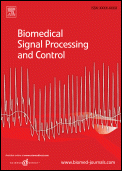
Biomedical Signal Processing and Control
Scope & Guideline
Empowering research at the intersection of engineering and health.
Introduction
Aims and Scopes
- Biomedical Signal Processing:
The journal emphasizes the development and application of algorithms and techniques for processing biological signals, such as ECG, EEG, and EMG, to improve the accuracy of disease diagnosis and monitoring. - Control Systems in Healthcare:
Research often involves the use of control systems to manage and optimize biomedical devices and therapies, including adaptive control for medical devices and automation in surgical interventions. - Machine Learning and AI Integration:
A significant focus is placed on leveraging machine learning and artificial intelligence to enhance the capabilities of biomedical signal processing, enabling better predictive modeling and classification of health conditions. - Image Processing and Analysis:
The journal covers advancements in medical image processing, including segmentation, feature extraction, and enhancement techniques, particularly for MRI, CT, and ultrasound images. - Multimodal Data Fusion:
Research frequently explores the integration of data from multiple sources (e.g., imaging, physiological signals) to provide a comprehensive analysis of patient health, which enhances diagnostic capabilities. - Real-Time Monitoring Solutions:
The journal also focuses on the development of real-time monitoring systems for various physiological parameters, facilitating timely and responsive healthcare interventions.
Trending and Emerging
- Deep Learning Applications:
There is a growing emphasis on utilizing deep learning techniques across various biomedical applications, particularly in image and signal classification, demonstrating their effectiveness in improving diagnostic accuracy. - Wearable and Remote Monitoring Technologies:
Research into wearable devices and remote monitoring systems is on the rise, reflecting the increasing demand for continuous health monitoring and telemedicine solutions. - Explainable AI in Healthcare:
An emerging theme involves the integration of explainable AI techniques to enhance the interpretability of models used in clinical settings, ensuring transparency and trust in automated decisions. - Data Augmentation and Transfer Learning:
The use of data augmentation techniques and transfer learning is becoming more prevalent, particularly in scenarios with limited datasets, allowing for improved model performance and generalization. - Hybrid Models Combining Multiple Techniques:
There is a notable trend towards hybrid models that combine various methodologies, such as integrating machine learning with traditional signal processing techniques to leverage the strengths of both. - Focus on Mental Health Applications:
Recent publications show a trend towards addressing mental health issues through the analysis of physiological signals, indicating a growing recognition of the importance of mental health in biomedical research.
Declining or Waning
- Traditional Statistical Methods:
There seems to be a waning interest in purely statistical approaches to biomedical data analysis, as more researchers are shifting towards machine learning and AI-driven methodologies. - Basic Signal Processing Techniques:
Basic signal processing techniques without advanced modifications or machine learning integration are less frequently addressed, indicating a trend towards more complex and integrated approaches. - Conventional Imaging Techniques:
The focus on traditional imaging techniques alone, such as standard MRI or CT analysis without advanced processing methods, appears to be declining as more sophisticated techniques gain traction. - Single-Modal Approaches:
Research that solely focuses on single-modality analysis (e.g., only EEG or only ECG) is less prevalent, with a clear shift towards multimodal approaches that combine various data types for better insights.
Similar Journals

MEASUREMENT & CONTROL
Fostering Collaboration Across Control Systems and MathematicsMEASUREMENT & CONTROL is a prominent journal published by SAGE PUBLICATIONS LTD, dedicated to advancing the fields of applied mathematics, control systems, and instrumentation. With an ISSN of 0020-2940 and an E-ISSN of 2051-8730, this open-access journal has been serving the academic community since 1968, ensuring that essential research findings are accessible to all. As of 2023, it is recognized within the Q3 quartile of Scopus rankings in key categories including Applied Mathematics, Control and Optimization, and Instrumentation, highlighting its relevance in an ever-evolving scientific landscape. The journal not only fosters high-quality research but also encourages the exchange of innovative ideas and techniques, making it an essential resource for researchers, professionals, and students alike. With a focus on the latest advancements and methodologies, MEASUREMENT & CONTROL remains a vital platform for disseminating knowledge and fostering collaboration within these interdisciplinary fields.

MACHINE VISION AND APPLICATIONS
Exploring the Intersection of Vision and Application.MACHINE VISION AND APPLICATIONS is a distinguished peer-reviewed journal published by SPRINGER, serving as a vital platform for innovative research in the fields of computer vision, pattern recognition, and their applications within hardware and software systems. Since its inception in 1988, the journal has been at the forefront of disseminating cutting-edge findings and advances in machine vision technologies, significantly contributing to the global academic discourse. With an impressive track record, the journal ranks in the Q2 category across various domains in the 2023 Scopus rankings, reflecting its esteemed position in Computer Science Applications, Computer Vision and Pattern Recognition, Hardware and Architecture, and Software. Although it does not currently offer open access options, MACHINE VISION AND APPLICATIONS remains a critical resource for researchers, professionals, and students eager to explore emerging trends and methodologies in the rapidly evolving landscape of machine vision.

BIOMEDICAL ENGINEERING-APPLICATIONS BASIS COMMUNICATIONS
Fostering collaboration in the realm of biomedical engineering.BIOMEDICAL ENGINEERING-APPLICATIONS BASIS COMMUNICATIONS is a prominent journal dedicated to the dynamic field of biomedical engineering, published by WORLD SCIENTIFIC PUBL CO PTE LTD. Since its inception in 1992, the journal has provided a platform for the dissemination of high-quality research and innovative applications within the biomedical engineering domain. Despite its current Q4 ranking in multiple categories such as Bioengineering and Biomedical Engineering, the journal serves as an essential resource for researchers and professionals seeking to explore the latest developments and practical applications in this interdisciplinary field. The journal is based in Singapore, reflecting the region's growing influence in scientific research and technology. Although it does not offer open access, it continues to attract submissions that enrich the scientific dialogue within its community. With a commitment to fostering knowledge and research collaboration, this journal remains a vital contributor to the ongoing advancements in biomedical technology and engineering.

Journal of Electrical and Computer Engineering
Unleashing Potential in Electrical and Computer EngineeringJournal of Electrical and Computer Engineering is a premier open-access journal published by HINDAWI LTD, dedicated to advancing the fields of electrical and computer engineering. With an ISSN of 2090-0147 and an E-ISSN of 2090-0155, this journal has been providing a platform for cutting-edge research since its inception in 2007. Based in the United States, it operates from its address at ADAM HOUSE, 3RD FLR, 1 FITZROY SQ, LONDON W1T 5HF, ENGLAND. The journal has established itself with a healthy impact factor, classified in the 2023 Q2 quartile for both Computer Science (Miscellaneous) and Electrical and Electronic Engineering, demonstrating its growing influence in the academic community. Additionally, its ranking positions it within the 67th percentile in General Computer Science and the 61st percentile in Electrical and Electronic Engineering on Scopus, indicating its significant contribution to these fields. Covering an extensive scope from 2010 to 2024, the journal seeks to publish innovative research articles, reviews, and case studies that explore new techniques and applications in electrical and computer engineering, benefiting a wide audience of researchers, professionals, and students focused on these rapidly-evolving areas.

Journal of Medical Signals & Sensors
Advancing Biomedical Technology for a Healthier TomorrowJournal of Medical Signals & Sensors, published by Wolters Kluwer Medknow Publications, is a pioneering platform in the fields of Biomedical Engineering, Computer Science, and Health Informatics, focusing on innovative research and advancements in medical technology. With an Open Access policy since 2012, the journal promotes widespread dissemination of knowledge, aiming to facilitate the sharing of vital insights and developments among researchers, healthcare professionals, and students globally. The journal has achieved commendable rankings in its various categories, including Q3 in Biomedical Engineering and Radiology, underscoring its importance in advancing health technology and informatics. Its commitment to rigorous peer review ensures that published works are of the highest quality, making it a valuable resource for those engaged in cutting-edge medical research. With annual publications planned through 2024, the Journal of Medical Signals & Sensors continues to expand its influence and relevance in a rapidly evolving scientific landscape.

Journal of Mechanics in Medicine and Biology
Pioneering Interdisciplinary Solutions in Medicine and BiologyThe Journal of Mechanics in Medicine and Biology, published by World Scientific Publishing Co Pte Ltd, serves as a critical platform for interdisciplinary research at the intersection of engineering and biomedical sciences. With an ISSN of 0219-5194 and E-ISSN of 1793-6810, this esteemed journal has been dedicated to exploring the mechanical principles that govern biological systems since its inception in 2008. Based in Singapore, it addresses a diverse range of topics, from biomaterials to biomechanics, contributing valuable insights into the field’s evolving landscape. Although currently positioned in Q4 of Biomedical Engineering according to the 2023 category quartiles, it is poised for growth and increased visibility within the scientific community, fostering innovation and collaboration among researchers, professionals, and students alike. The journal emphasizes the importance of cutting-edge research and its practical implications, making it a vital resource for those striving to enhance the future of medical technologies and biological understanding.

Biocybernetics and Biomedical Engineering
Unleashing the Potential of AI in HealthcareBiocybernetics and Biomedical Engineering, published by ELSEVIER in the Netherlands, is a prestigious journal that stands at the forefront of the intersecting fields of biomedical engineering and artificial intelligence. With an impressive Impact Factor that places it in the Q1 category for Biomedical Engineering, this journal not only ranks 17th out of 303 in Scopus but also boasts a remarkable percentile ranking of 94th, highlighting its influence and relevance within the scientific community. Since its inception in 2008, Biocybernetics and Biomedical Engineering has aimed to publish cutting-edge research that integrates principles of cybernetics with technological advancements in health care, thereby fostering innovations that improve patient outcomes. Dedicated to advancing knowledge in biomedical technology, the journal serves as a vital resource for researchers, professionals, and students seeking to explore the latest developments and methodologies in the field.

Elektronika Ir Elektrotechnika
Empowering Research for Tomorrow's TechnologiesElektronika Ir Elektrotechnika is a premier academic journal dedicated to the field of electrical and electronic engineering, published by Kaunas University of Technology, Lithuania. With an Open Access model since 2004, this journal ensures that cutting-edge research is accessible to a global audience, facilitating the dissemination of knowledge and fostering innovation in the engineering community. The journal is currently categorized in the Q3 quartile for Electrical and Electronic Engineering as of 2023 and holds a Scopus ranking of #473 out of 797, placing it in the 40th percentile. Covering a diverse range of topics from emerging technologies to foundational research, Elektronika Ir Elektrotechnika serves as an invaluable resource for researchers, professionals, and students alike, supporting the advancement of both theoretical and practical aspects in electrical engineering. As we converge towards the years 2008 to 2024, the journal invites submissions that contribute to the evolving landscape of the discipline, aiming to inspire future innovations and collaborations.

EURASIP Journal on Advances in Signal Processing
Catalyzing Collaboration in Cutting-Edge Signal Processing Studies.EURASIP Journal on Advances in Signal Processing, published by Springer, is a premier open-access journal that has been at the forefront of research in the field of signal processing since its inception in 2001. With a focus on advancing the disciplines of Electrical Engineering, Hardware and Architecture, and Signal Processing, this journal plays a crucial role in disseminating innovative findings and facilitating collaboration among academics and industry professionals. Ranking in Q2 for Electrical and Electronic Engineering and Q3 in both Hardware and Architecture and Signal Processing as per the 2023 category quartiles, it highlights the journal's commitment to high-quality research. The journal is indexed in Scopus, reflecting its reputable standing within the global research community. Researchers, professionals, and students are invited to contribute to and benefit from the wealth of knowledge and advancements presented in each issue, furthering their understanding and application of state-of-the-art signal processing techniques.

Frontiers in Signal Processing
Advancing Knowledge, Transforming ApplicationsFrontiers in Signal Processing is a pioneering open access journal published by FRONTIERS MEDIA SA that has been a key player in the field of signal processing since its launch in 2021. With an E-ISSN of 2673-8198, this journal aims to foster innovative research and contribute to advancements in various signal processing applications, from audio and image processing to telecommunications and biometrics. As a platform for researchers, professionals, and students, it provides a rigorous peer-review process along with wide dissemination of high-quality articles, making groundbreaking findings freely accessible to a global audience. The journal’s commitment to open access ensures that knowledge is not confined by paywalls, thereby empowering the scientific community to accelerate discovery and learning. With a comprehensive scope that encompasses theoretical insights and practical applications, Frontiers in Signal Processing is poised to play a vital role in shaping future developments in this dynamic field.